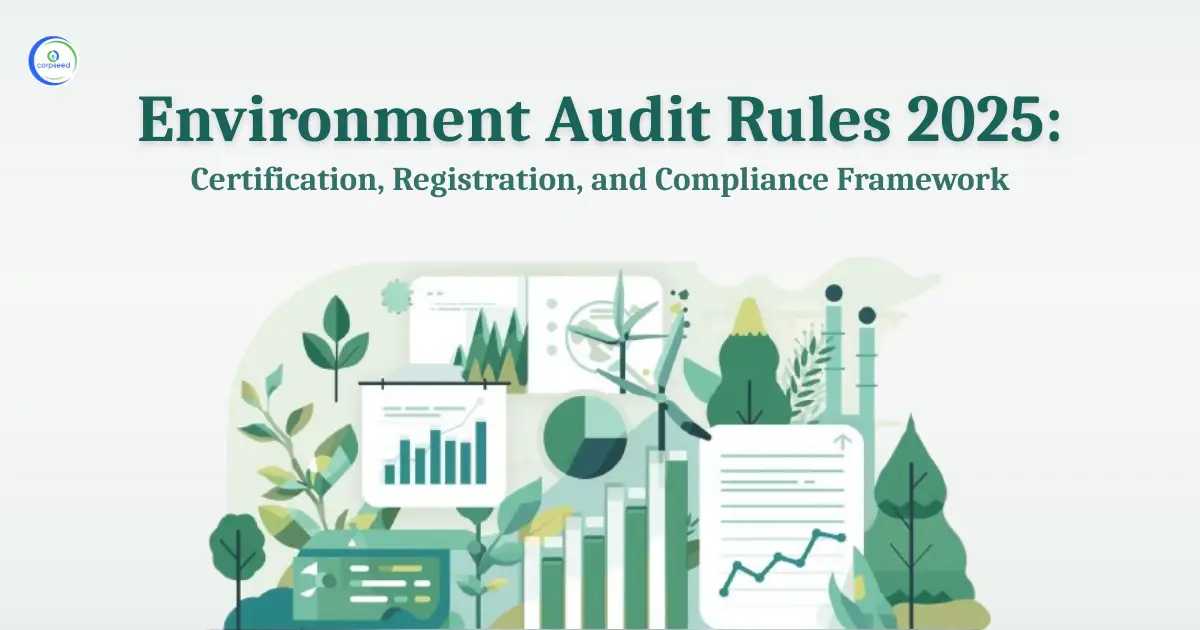Introduction to the Stages of the Environmental Impact Assessment
Environmental impact assessment is one of the crucial processes in identifying the effects of a project or development proposal on the environment. It is mainly influenced by socioeconomic, cultural, and other human-impact factors. Following this, UNEP has come to define the EIA as one of the most effective tools that aims to investigate the environmental, social and economic impacts of any project, prior to decision-making.
In total, it is able to detect any loopholes at the initial stage of the project planning, by striving for solutions that reduce the magnitude of the adverse effects that might befall us. With it comes the environmental impact assessment in India, also known as a statutory body, which is assisted by the Environment Protection Act 1986, which talks about the numerous provisions of the EIA process or methodology.
Table of Contents
- Introduction to the Stages of the Environmental Impact Assessment
- Importance of environmental Impact assessment
- What are the Environmental Stages of the Environmental Impact Assessment?
- Public Participation in Environmental Assessment
- Common challenges in navigating the environmental assessment
- Conclusion
--------------Blog Contact Form-------------
Importance of environmental Impact assessment
The importance of environmental projects in evaluating the socioeconomic impacts of a project is just as inevitable as environmental assessments. This very tool identifies those impacts and informs the same prior to decision-making. It encourages a reasonable strategy that predicts the environmental impact and influences the project planning by encouraging ways to minimize the adverse impacts, just to suit the local environment and put forth the ideas to decision-makers.
Read Our Blog: Importance of Environmental Impact Assessment in India
What are the Environmental Stages of the Environmental Impact Assessment?
The various environmental stages of the environmental impact assessment are listed below-
Environmental Stages of the Environmental Impact Assessment
The very first stage of the Environmental Impact Assessment is where the project is -
- Screening
It is deemed to be the initial stage of the environmental impact assessment, which undertakes the project plan by examining the extent of the scale of investment, the type of development or the location to verify if it seems eligible for statutory clearance. As a matter of fact, it gauges the level of environmental hazards from the same, based on the above-mentioned factors.
- Scoping
In this stage, the scoping talks about the potential environmental impacts associated with the projects, and the impact of those zones, while striving for the solutions to mitigate any of these harms.
- Impact Assessment & mitigation
The impact assessment thoroughly evaluates a project's environmental and social factors while identifying alternative solutions that could aid the process compared to established criteria. The assessment collects both quantitative and qualitative data specific to the project and compares identified solutions to determine the best course of action.
Mitigation, on the other hand, refers to minimizing the effects and is implemented as a means to cater to the impact assessment by reaching out to all those areas, identified. These factors, in turn, enable us to restrict the severity and impact at large. The main idea is to identify the impact and then mitigate those impacts of the respective project.
- Impact management
Impact Management comes with a series of plans and strategies, considering the implementation of the mitigation factors along with the risks that might hover on the project for a lifetime.
With plans of crucial importance, you may bring into sanction the environmental management plan (EMP) that is reportedly being encouraged as a part of EIA in various countries.
- EIA Report
The EIA report encompasses multiple projects and incorporates various elements, including environmental assessments, mitigation measures, and monitoring plans. During this stage, the gathered information is condensed into a comprehensive report that evaluates and analyses the data based on the structures, in relation to the reference (TOR).
- Review and Licensing
Review and Licensing involves the thorough evaluation of the EIA report's quality information. Its primary purpose is to secure the project license. After the submission of the EIA report, the authorities will meticulously oversee it, scrutinizing the methods used and interpreting the data to assess the impacts of the new development.
- Monitoring
Like the name itself, monitoring is one of the viable ways to request data as per the social and environmental impacts received on a project's lifecycle.
Therefore, all these steps talk about the necessary stages of the environmental impact assessment (EIA).
Read Our Blog: What Are The Components Of Environmental Impact Assessment?
Public Participation in Environmental Assessment
In India, the advent of public participation in environmental assessment plays a vital role in establishing effective communication with all those people, who show an interest in the project. As a result of this enthusiastic participation, it unleashes a comprehensive exploration of ideas, which encourages discussions, that would significantly encourage the quality and legitimacy of the Environmental Impact Assessment (EIA)
Public Participation can take various forms and discuss a wide range of invaluable contributions, including perspectives, insights and feedback. No wonder, these inputs might greatly strengthen the credibility of EIA, while encouraging its overall effectiveness.
It is by involving the public in the environmental assessment process, that the need for a thorough understanding of the potential impacts can be gauged. With participation, the individuals get to provide valuable knowledge, which can enrich the assessment.
In addition to this, public participation might just be the adequate platform for conducting the education as well as the idea of awareness building. It has with itself the opportunity to help individuals understand the environmental implications of any project along with its consequences. It is the righteous initiative to how the public becomes more empowered and informed, while enabling them to make the right decisions, while contributing to the process of sustainable development.
Read Our Blog: Key Proposals Of The Draft EIA Notification 2020
Common challenges in navigating the environmental assessment
The environmental impact assessment is considered as a process of evaluation in highlighting the potential effects of a project on the environment and activity. EIA is essential as it ensures that renewable energy projects align with sustainability while adhering to social and environmental goals. Moreover, fulfilling EIA may even pose some e common challenges in navigating the environmental assessment which are as follows-
- Availability of Data
One of the primary challenges in environmental assessment is acquiring accurate data regarding the environmental and social effects of a project, as well as the necessary measures to mitigate them. This challenge can vary depending on the project's location, such as a renewable energy project in India, and the institutional frameworks involved.
- Engagement with the Stakeholder
Another challenge faced by Environmental impact assessment is about effectively communicating with the stakeholders throughout the entire process. This includes the Project proponents, communities, experts as well as regulators.
- Mitigation Monitoring
The final challenge to the Environmental impact assessment is the ability to suggest and implement the mitigation measures that come with the renewable energy project. These measures are the actions to avoid or compensate negative impact of the project, just when they evaluate the outcomes of the project.
Read Our Blog: Environmental Impact Assessment in India
Conclusion
The process of environmental assessment is considered to be an effective tool for evaluating the potential impacts of certain actions and finding solutions before making any decisions. It is crucial to plan the assessment properly, taking into consideration the local environment and minimizing any negative impacts. The goal is to present decision-makers with feasible solutions that are in line with environmental protection.
Environment Impact Assessment
Environmental impact assessment is an instrument to evaluate the consequences of the establishment of a new project or expansion of projects related to industries, mining, pipelines, etc. Enjoy simple processing and no hidden fees.
Environmental Audit
An environmental audit is an important part of a company’s environmental policy and performance. It checks whether the company has complied with the environmental regulations and requirements, and achieved the environmental goals set by them.
Environmental Consulting
An environmental consultancy firm consists of a team of experts, who’re qualified in the studies of law, geology, environment, engineering, and have years of experience dealing with the aspects of regulations & norms associated with environmental laws.
This portion of the site is for informational purposes only. The content is not legal advice. The statements and opinions are the expression of author, not corpseed, and have not been evaluated by corpseed for accuracy, completeness, or changes in the law.
BOOK A FREE CONSULTATION
Get help from an experienced legal adviser. Schedule your consultation at a time that works for you and it's absolutely FREE.







_Corpseed.webp)
.webp)
